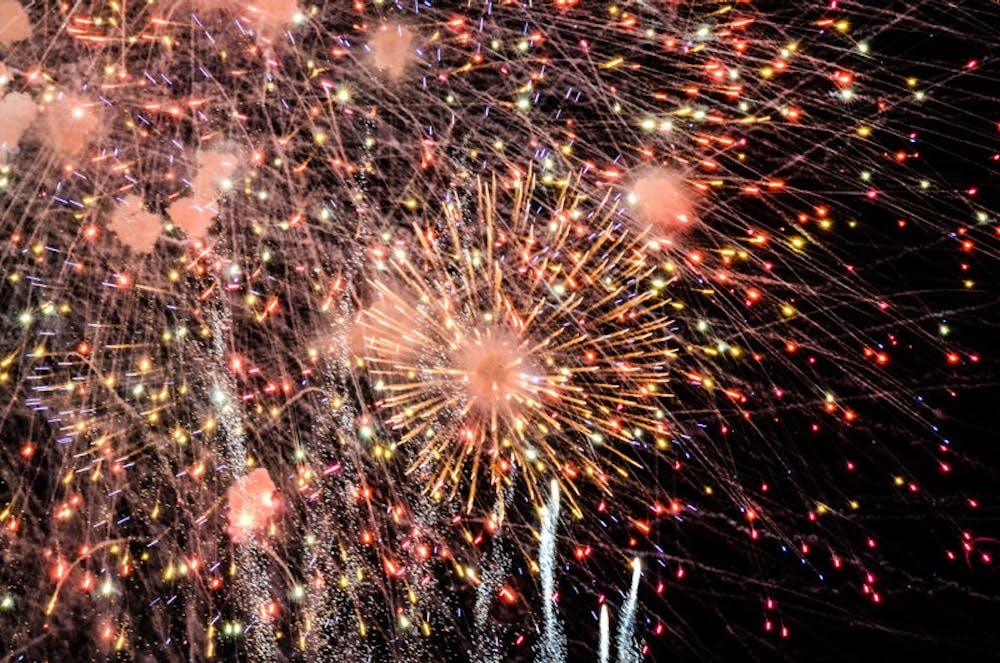While New Year’s is a time to reminisce about the previous year, it is also a time to celebrate a new chapter in people’s lives.
As 2015 comes to a close, people from all over the world celebrate New Year’s in different ways, but with the common goal of having good fortune in the year ahead.
While you might be familiar with some of your country's most memorable New Year’s traditions, there are probably many you do not know in other countries.
In the U.S., New Year’s Eve in Times Square in New York City is the center of international attention.
Times Square puts on many televised events, the biggest being the lowering of the ball at 11:59 p.m. while counting down the seconds until the new year.
The lowering of the ball came about when New York City banned fireworks, so The New York Times owner, Adolph Ochs, arranged to have a 700-pound iron and wood ball lowered from the tower flagpole at midnight to indicate the beginning of 1908, according to the Times Square website. Over a century after the first New Year’s ball, the current ball weighs 11,875 pounds and “is capable of displaying a palette of more than 16 million vibrant colors and billions of patterns that create a spectacular kaleidoscope effect atop One Times Square."
Over 1 billion people watch the celebration on television each year, which has made the lowering of the ball a worldwide symbol of greeting the new year.
While watching the Times Square ceremony, families and friends gather together at parties.
When the ball drops at midnight, people commemorate the beginning of the new year by sharing kisses, which is believed to deter evil spirits and purify the coming year, and by blowing paper blowers and whistles.
At parties, Americans also eat cake and drink champagne. It is believed that eating Hoppin’ John, a stew with black-eyed peas, is very fortunate for the new year, according to the 123newyear website.
Many traditions believe that you must eat 365 black-eyed peas to bring luck in the coming year, according to Southern Plate.
In China, setting off fireworks is a significant event in celebrating New Year’s.
According to the Chinese New Year Traditions website, fireworks are launched on New Year's Eve to celebrate the new year as well as to ward off evil, and it is thought that the person who launched the first firework of the new year will have good luck.
The Chinese observe the Lunar New Year, and the official celebration lasts from Feb. 7-13, 2016, with New Year’s Day being Feb. 8, according to chinahighlights.com.
In many South American countries and some European and Asian countries, the color of your underwear on New Year’s Eve is believed to determine the prosperity of the year ahead, according to the Underwear Expert website.
For example, in Puerto Rico, wearing white underwear is considered to help in fertility and a year of good health. In Peru, wearing green underwear will give you positive energy and even more if you wear it inside out then change it back at midnight.
The majority of countries believe that wearing black underwear brings misfortune to the new year.
In the Philippines, prosperity for the new year can be assured by dispersing coins around the house and preparing 12 round fruits, one for each month of the coming year. It is also good luck to have a round grape in your mouth upon reaching midnight, according to the Tagalog Lang website.
Grapes are also an important part of New Year’s traditions in Spain, as Spaniards eat 12 grapes at the stroke of midnight with hopes of having 12 lucky months in the new year, according to the Food Republic website.
Regardless of the traditions you follow, New Year's gives people hope for a better year.
Do you like this story? The Plainsman doesn't accept money from tuition or student fees, and we don't charge a subscription fee. But you can donate to support The Plainsman.





